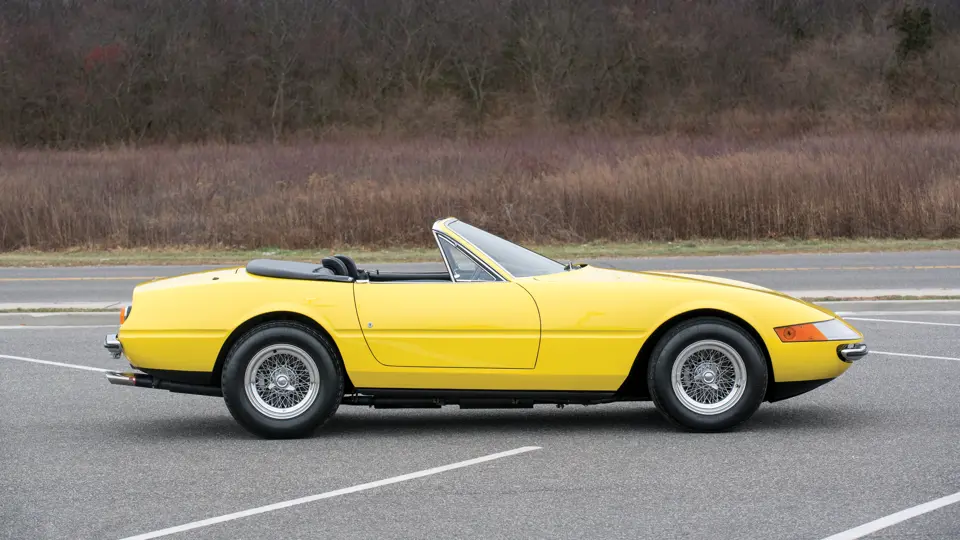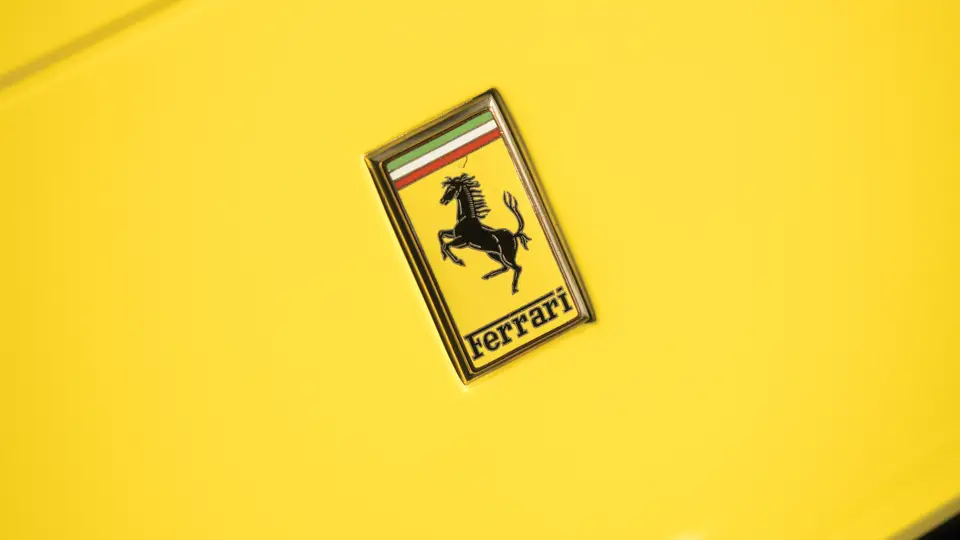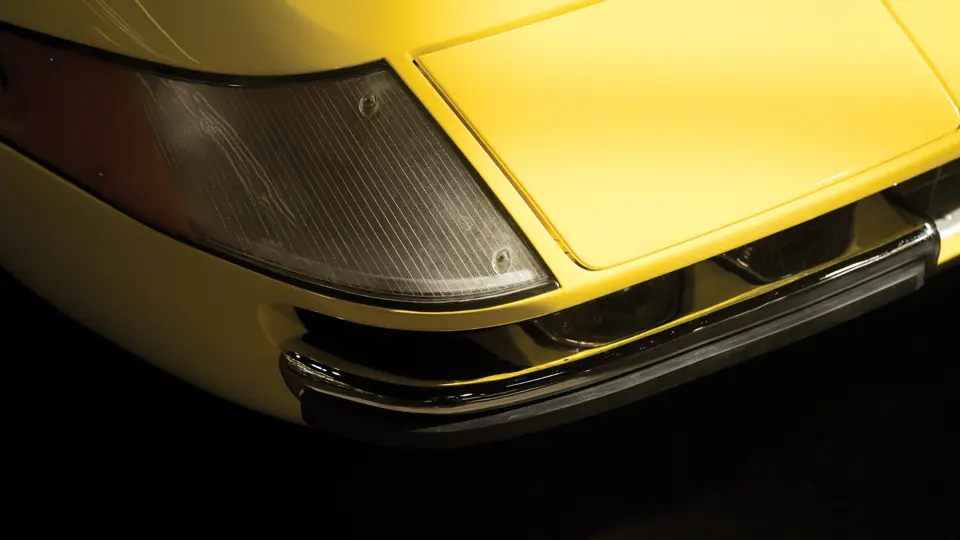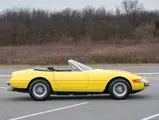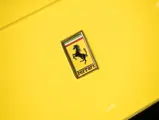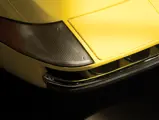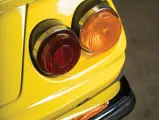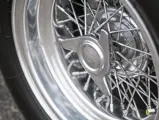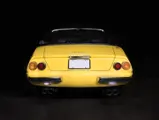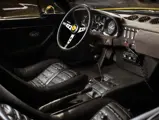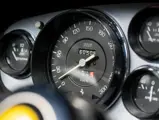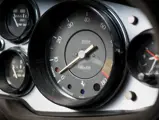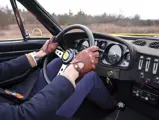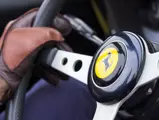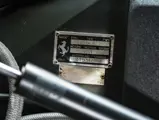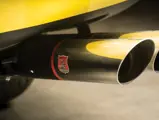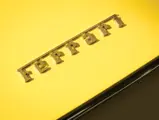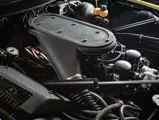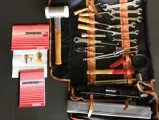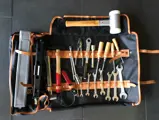
1973 Ferrari 365 GTS/4 Daytona Spider
{{lr.item.text}}
$2,500,000 - $3,000,000 USD | Not Sold
{{bidding.lot.reserveStatusFormatted}}
- A genuine Daytona Spider; one of 121 originally built
- One of only 18 European-specification examples
- Beautifully presented in its original colors
- Offered with books and tools
- Ferrari Classiche certified
352 bhp, 4,390 cc DOHC V-12 engine with six Weber 40 DCN17 carburetors, five-speed manual transaxle, independent front and rear suspension with coil springs and wishbones, and four-wheel hydraulic drum brakes. Wheelbase: 94.5 in.
Until the introduction of the 550 Maranello, the 365 GTB/4 represented the end of the line for Ferrari’s two-seater front-engined V-12 grand touring cars, and it was a fantastic automobile in every regard and a high-water mark for Pininfarina style, gracing the cover of nearly every motoring magazine at its introduction. While many believed at that time that mid-engined sports cars were the way of the future, which was spurred on by Lamborghini’s futuristic Miura, Ferrari stuck with their classic formula of keeping their V-12 in the front, and they were still able to produce a world-beating sensation. A sprint from 0–60 mph took just 5.4 seconds and led onward to a top speed of 174 mph, making this the fastest production car in the world at the time of its unveiling in 1968. The car, nicknamed “Daytona” after Ferrari’s legendary 1-2-3 finish at the 1967 24 Hours of Daytona, was a wonderful replacement to the 275 GTB/4, as it was vastly more refined from its predecessor in design but still manifestly a Ferrari, state-of-the-art for the conventional layout.
Many believed that it would be hard to top the Daytona Berlinetta, but Ferrari had one last trick up their sleeve. The first Daytona Spider was shown to the public at the Frankfurt Motor Show in September 1969, and it was finished in an eye-catching yellow, with a black interior and Borrani wire wheels. While the body contours remained largely identical, the rear wings on the spider were squared-off on the top edges. This first spider was also fitted with Plexiglas-covered headlights, like the earliest European-specification coupes, but all production Daytona Spiders were fitted with the later pop-up headlights. The car all but stole the show at its unveiling, and many existing clients immediately expressed interest.
Ferrari only built 121 true Daytona Spiders, which represents just a fraction of the 1,406 total examples built during Daytona production. Although a number of coupes were converted to spiders later in their life, genuine factory examples command a substantial premium and are undoubtedly the most desirable Daytonas built. Chassis 15369 is 1 of 25 European-specification Daytona Spiders, highly sought after and endowed with greater horsepower due to their lack of EPA-mandated emission controls. It goes without saying that these cars are highly desirable by collectors, not only for their rarity and specification but also for the added thrill of open-air V-12 motoring.
CHASSIS NUMBER 15369
According to the records of Ferrari historian Marcel Massini, the authentic original Daytona Spider offered here, chassis number 15369, was dispatched to Elie Ayache, the official Ferrari dealer in Beirut, Lebanon. The 48th of the 121 Spiders built, it was originally finished in Giallo Fly (20-Y-191) over Nero (VM 8500) and equipped with factory air conditioning. It has long been presumed that the original owner of the car was a member of a royal family in the region, although that remains a tantalizing possibility for the new owner to confirm, as we were unable to do so in the time available for catalogue production.
In 1978, the car relocated to the United States in the ownership of Carl Corzan of South Lake Tahoe, Nevada. Mr. Corzan drove the car extensively, as did a lady friend, and the two of them endured multiple accidents in the car. In the last noted incident, in 1994, the car’s fuel tank was ruptured, and the rear half of the body sustained fire damage. Proper factory nose and tail sections were sourced for repair, and an NOS fuel tank and trunk lid were also utilized; most of the rear inner structure, as well as parts of the front of the car, were also replaced and repaired at the same time, and the suspension was properly realigned. It is important to note that all this work was performed by recognized Ferrari specialists, including Mike Sheehan’s European Auto of Costa Mesa, California, who repaired the 1994 damage to ultimate factory specifications in December, 1995 (confirmed by Ferrari, as follows below).
In the mid-1990s, the car was sold to the United Kingdom, eventually making its way back to the United States and into the ownership of its present custodian, a highly regarded collector of the finest and most significant road-going Ferraris. Today, the car is in its original color scheme, recently cosmetically restored to concours condition and retaining its original numbers-matching engine. It has received a major service, including rebuilds of the ignition, carburetor, brakes, and suspension, as well as the installation of a new clutch and exhaust system. In addition, a fresh black interior has been beautifully and professionally installed most recently. It is also offered complete with books and tools.
Significantly, in its present long-term ownership, the car has been submitted to Ferrari Classiche and has received full ‘Red Book’ certification, verifying both the authenticity and quality of the car today—a testament to a well-enjoyed automobile that has been properly repaired and maintained.
The rarity and undeniable charisma of Daytona Spiders makes almost any example a desirable car. This beautiful Ferrari Classiche–certified example, with factory air conditioning and striking in its original colors, topped off with Borrani wire wheels, offers tremendous excitement and value in today’s discerning marketplace.
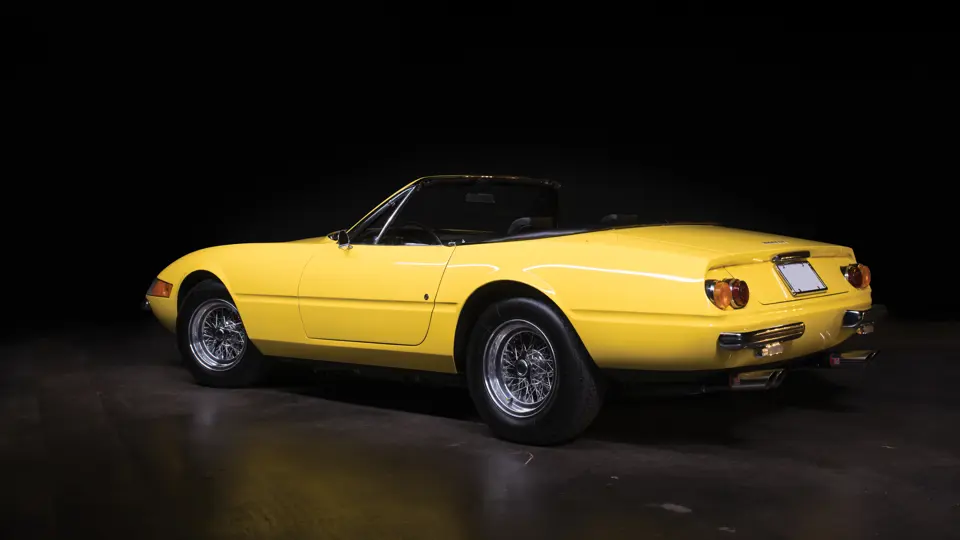





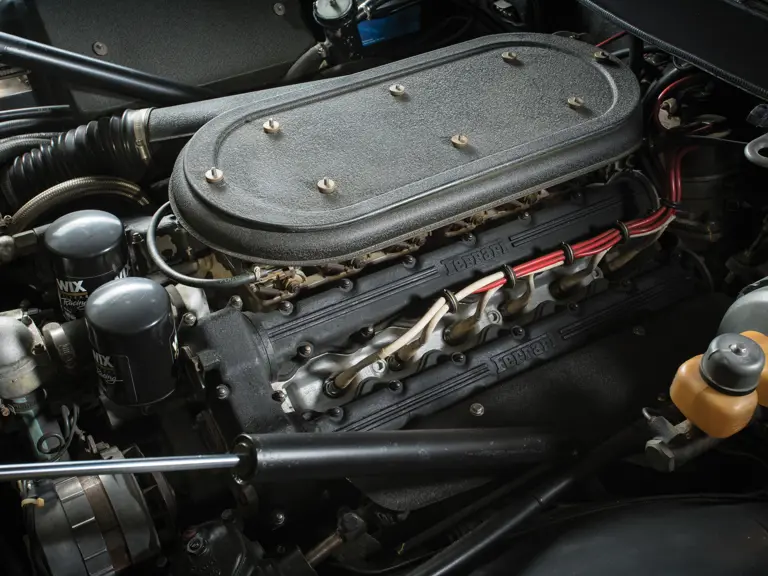
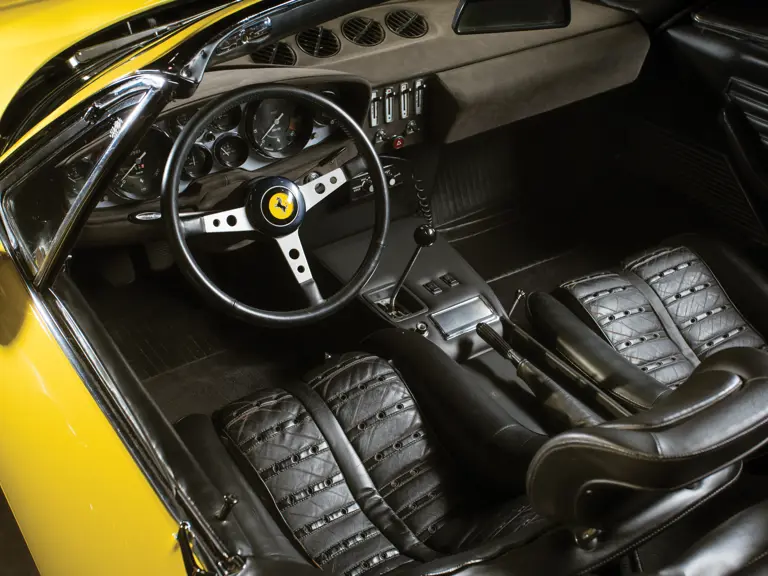
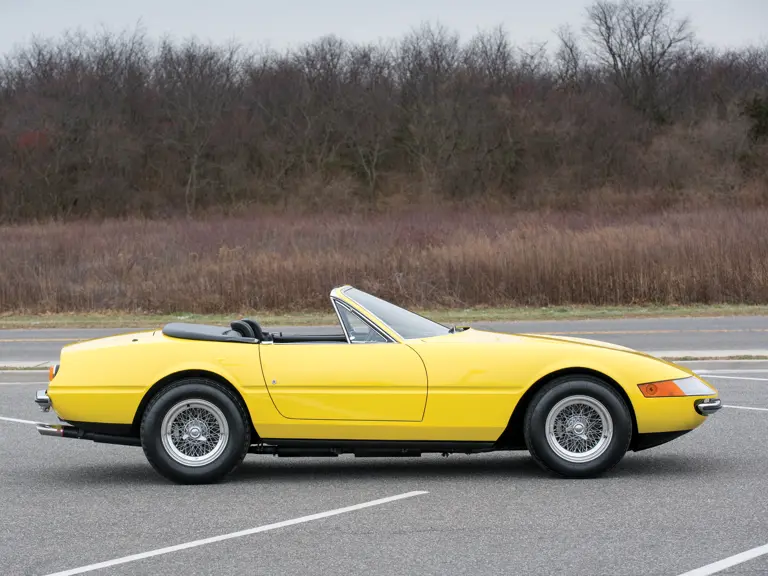
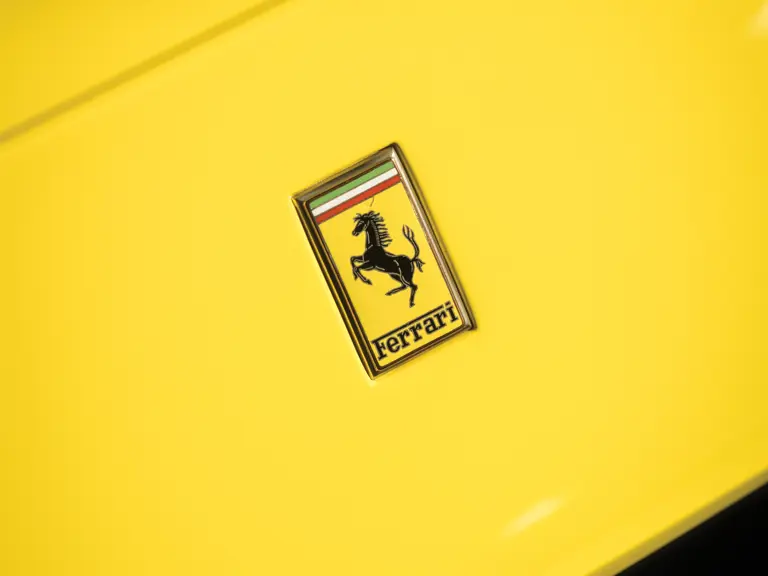
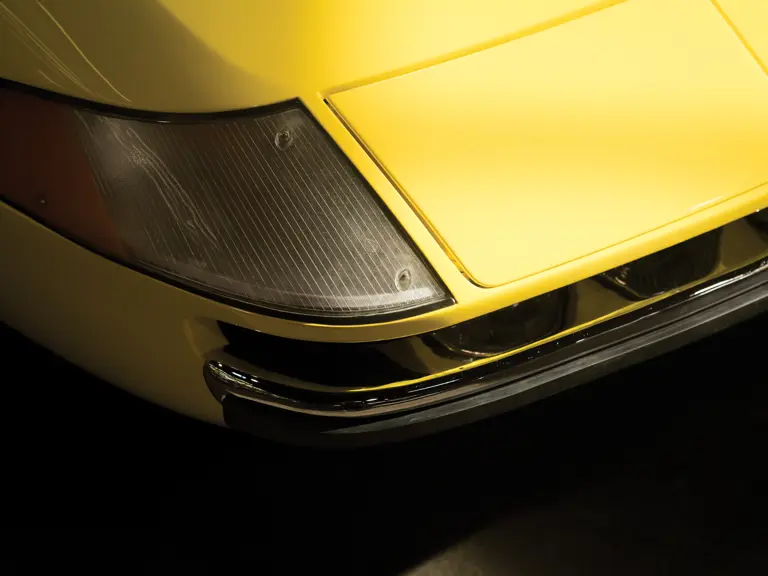
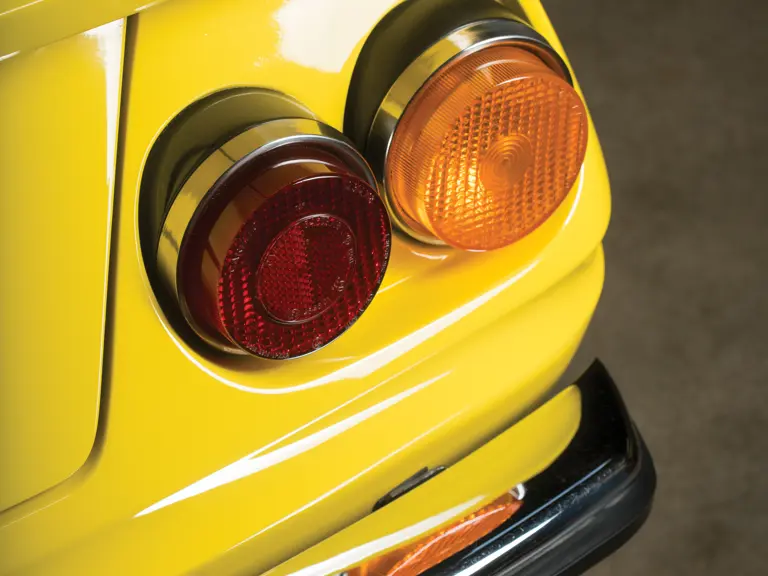
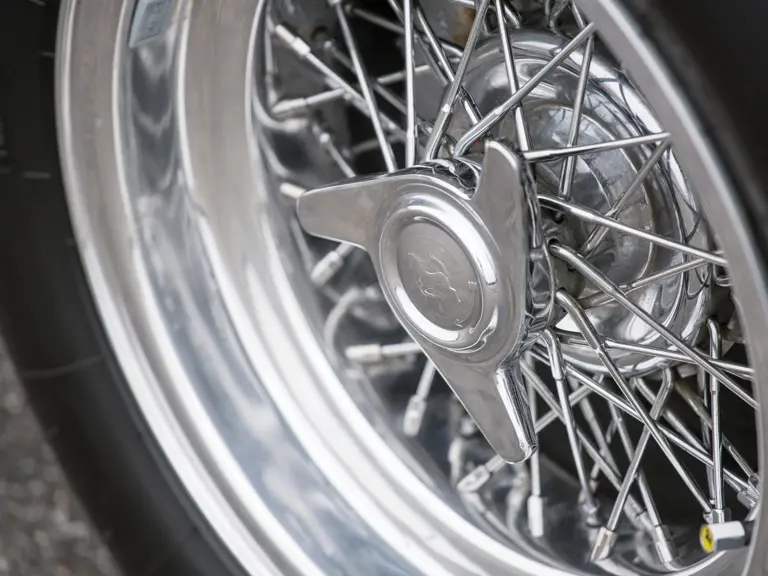
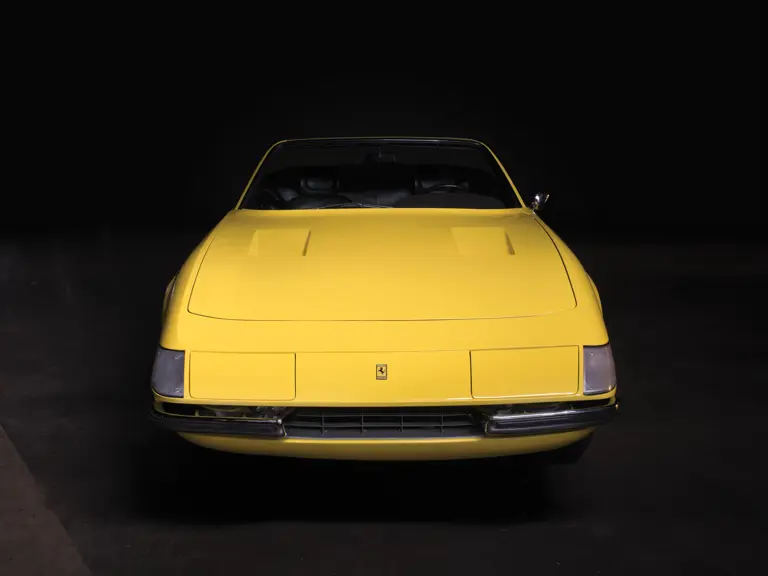
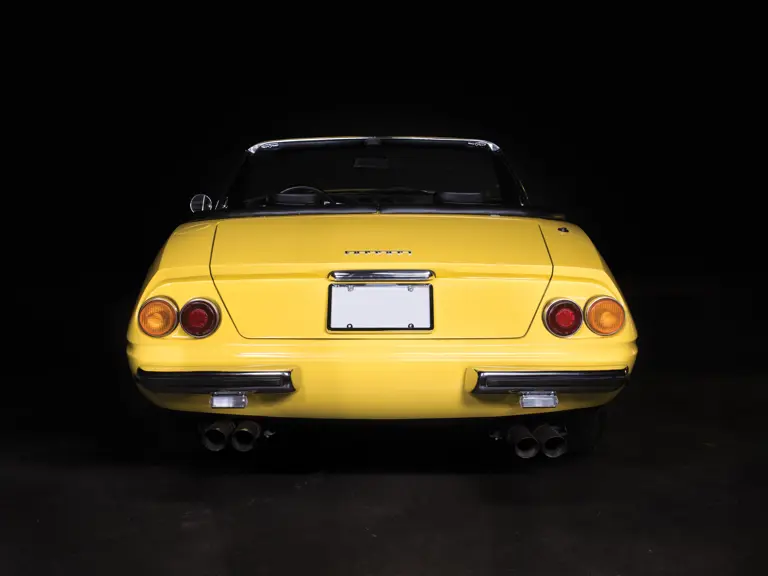
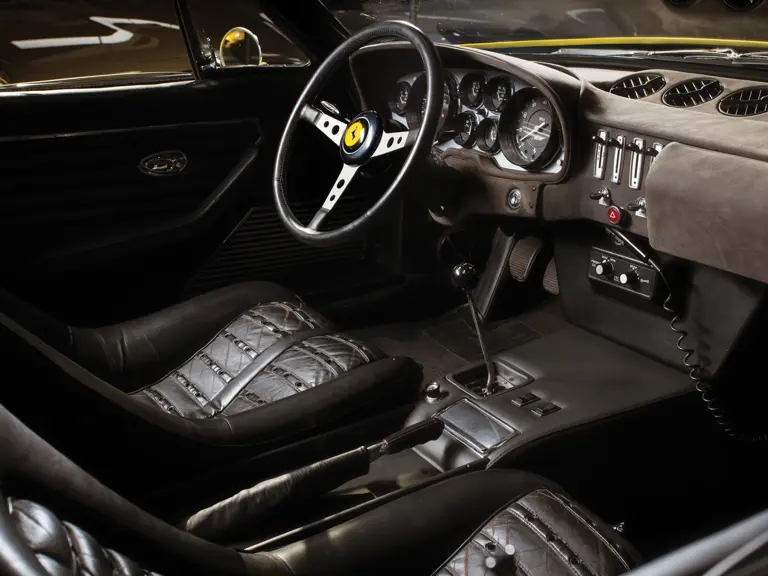
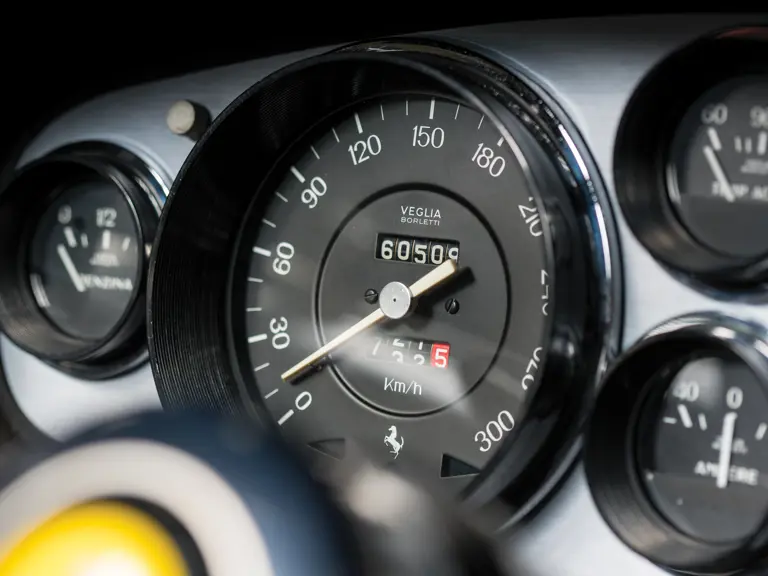
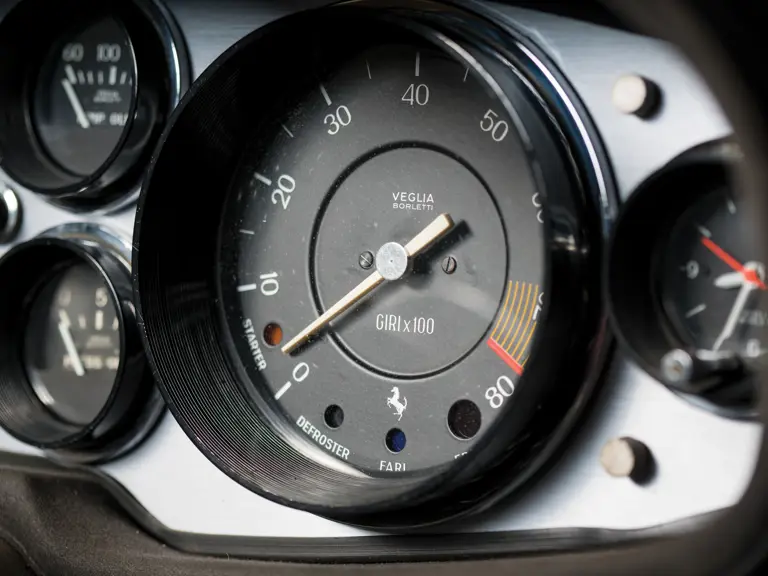
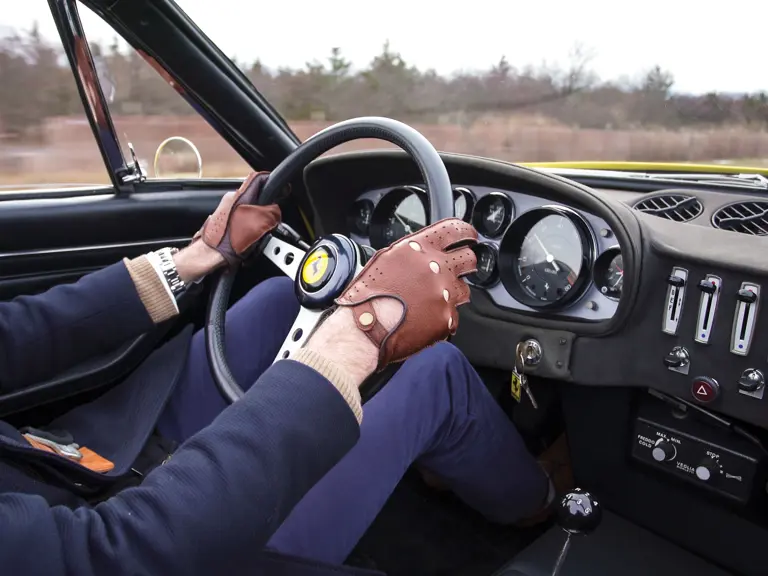

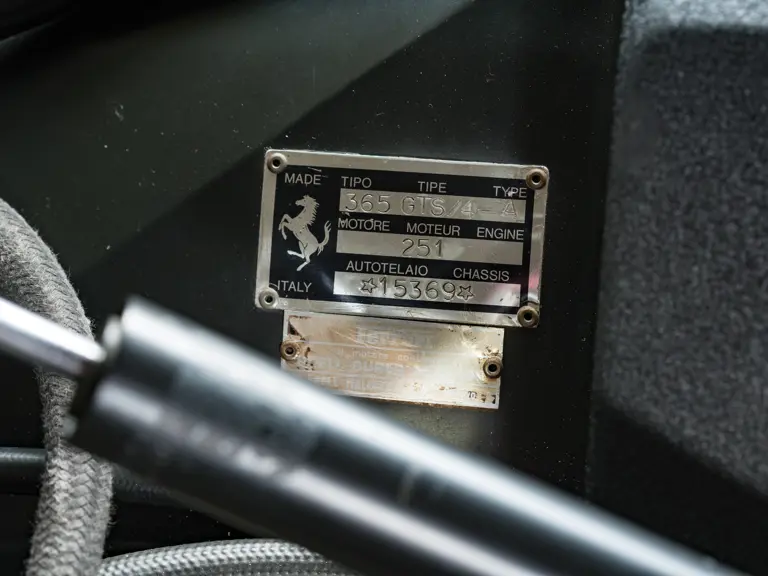
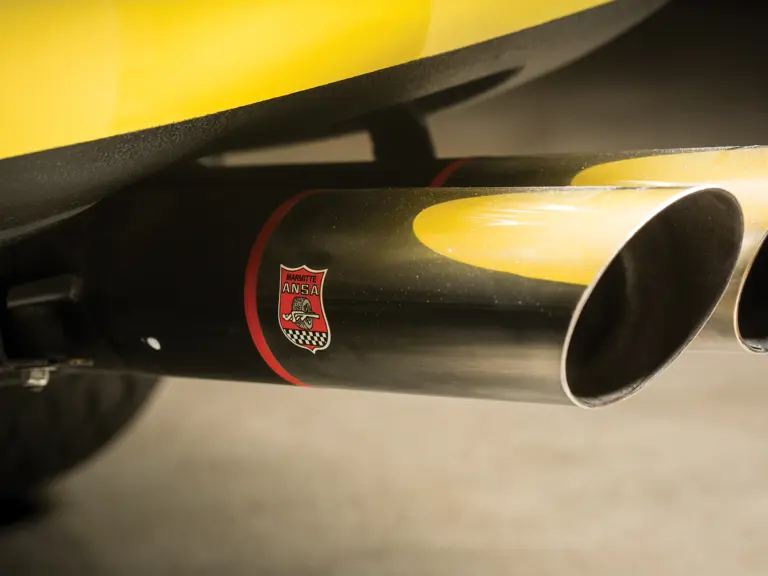
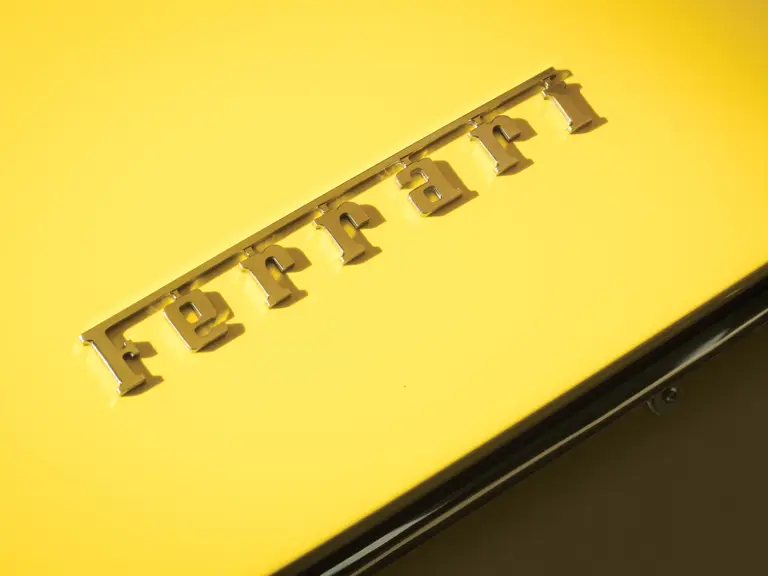
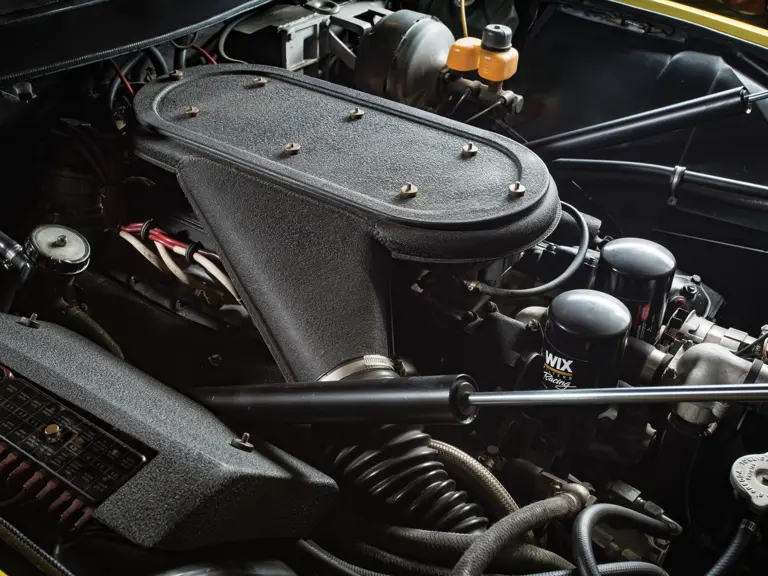
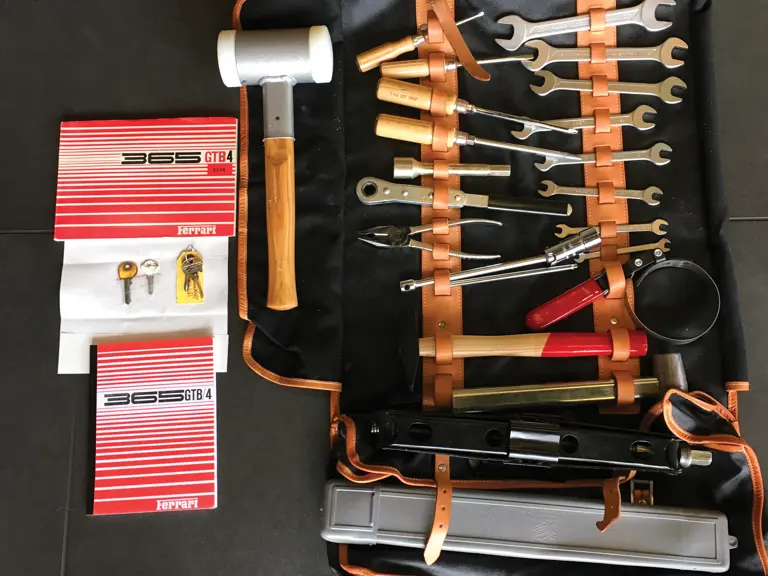
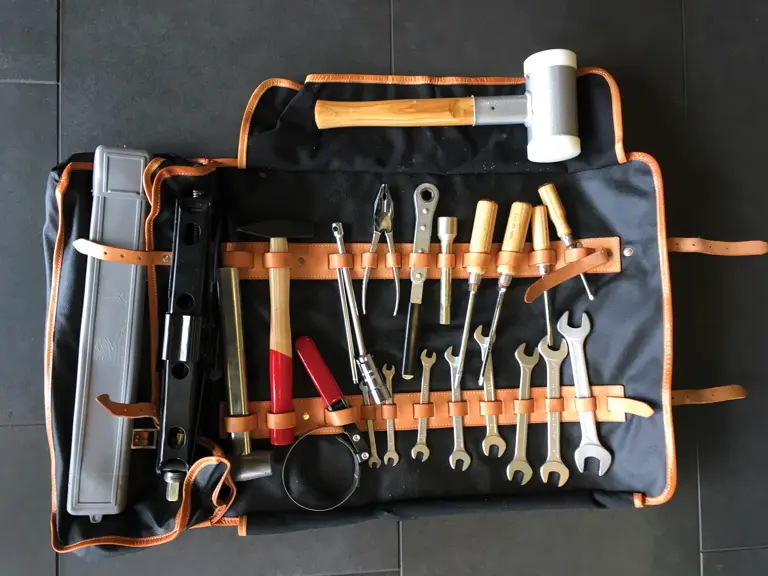
 | Amelia Island, Florida
| Amelia Island, Florida
